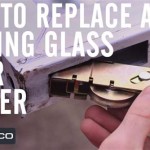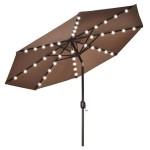How Much Pitch Should A Paver Patio Have?
A well-constructed patio is a beautiful and functional addition to any home, providing an outdoor space for relaxation, entertaining, and dining. However, proper drainage is crucial to ensure the longevity and aesthetic appeal of a paver patio. This involves creating an appropriate pitch, or slope, to direct water away from the patio surface. Understanding the necessary pitch for your paver patio is essential for preventing water damage, erosion, and unsightly puddles.
Determining the Ideal Pitch
The ideal pitch for a paver patio depends on several factors, including the size of the patio, the type of pavers used, and the local climate. Generally, a slope of 1/8 inch per foot is recommended for most paver patios. This means that for every 12 inches of horizontal distance, the patio should drop by 1/8 inch vertically.
This slope might seem minimal, but it's enough to provide adequate drainage without creating an uncomfortable or noticeable incline. A steeper pitch of 1/4 inch per foot can be used for larger patios or areas with heavy rainfall. However, slopes exceeding 1/4 inch per foot can become visually distracting and may even compromise the stability of the patio.
Benefits of a Properly Pitched Patio
A properly pitched paver patio offers numerous benefits:
Prevents Water Damage:
A well-designed slope ensures rainwater flows off the patio surface, preventing pooling and minimizing the risk of water seeping beneath the pavers. This helps to safeguard the integrity of your patio base and prevent structural damage.
Reduces Erosion:
By directing water away from the patio, the proper pitch discourages soil erosion around the edges, preserving the surrounding landscaping and maintaining the overall aesthetic appeal of your outdoor space.
Enhances Aesthetics:
A well-pitched patio appears clean and well-maintained, with no unsightly puddles or stagnant water. Even a slight slope can improve the visual appeal by creating a sense of order and flow.
Extends Patio Lifespan:
Proper drainage significantly contributes to the longevity of your paver patio. By preventing water damage and erosion, you protect the pavers, base materials, and supporting structures, ensuring your patio remains a durable and functional outdoor space for years to come.Achieving the Correct Pitch
Achieving the correct pitch for your paver patio requires careful planning and execution. Here are some key steps:
1. Establish a Reference Point:
The first step is to choose a starting point for your slope. This can be the lowest point of the patio, often located at the edge where water will drain.
2. Measure and Mark:
Determine the desired pitch (1/8 inch per foot or 1/4 inch per foot) and use this information to mark the intended slope along the patio's perimeter.
3. Leveling the Gravel Base:
The patio's gravel base plays a crucial role in achieving proper drainage. Ensure the base is level and consistent throughout, using a level and a rake to adjust the gravel depth as needed.
4. Install Pavers With Slope:
As you install the pavers, follow the marked slope, gradually adjusting the pavers to maintain the desired pitch. To ensure the pavers are level, use a level and a mallet to tap them into the gravel base, adjusting their position as needed.
5. Check for Drainage:
After installing the pavers, perform a test run by simulating rainfall. Observe how water flows over the patio surface. If there are any pooling areas, adjusting the paver levels or increasing the slope may be necessary.Importance of Professional Installation
While understanding the principles of patio pitch is important, professional installation is highly recommended for achieving optimal results. Experienced contractors possess the skills and expertise to ensure accurate measurements, appropriate grading, and proper drainage for your patio.
They are familiar with various paver types and their installation requirements, as well as the local climate and soil conditions. Professional installation minimizes the risk of errors and ensures the longevity and functionality of your paver patio.
.jpg?strip=all)
How To Install Patio Pavers Lv

How Much Should A Patio Slope Away From House

Grading A Patio Located Away From House

How Much Slope Should A Paver Patio Have Roofing Contractor Chimney Sweep Siding Masonry New Jersey
Questions On Sloping A Raised Patio Lawn Care Forum

5 Slope Too Much For Patio Doityourself Com Community Forums
How Much Slope Should A Paver Patio Have Quora

How Does Water Exit Your Paver Patio To Prevent Damage

Diy Patio Installation How To Build A Paver Scrappy Geek

Laying Patio Pavers Polycor Inc
Related Posts








